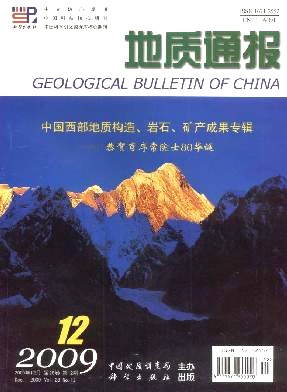ZHAO Zhi-dan1, MO Xuan-xue1, ZHU Di-Cheng1, NIU Yao-ling1,2,DONG Guo-chen1, ZHOU Su1, LIAO Zhong-li3, DEPAOLO Don J. 4. Petrogenesis and implications of the volcanic rocks in Zabuye salt lake area, western Lhasa terrane, Tibet, China.[J]. Geological Bulletin of China, 2009, 28(12): 1730-1740.
| Citation: |
ZHAO Zhi-dan1, MO Xuan-xue1, ZHU Di-Cheng1, NIU Yao-ling1,2,DONG Guo-chen1, ZHOU Su1, LIAO Zhong-li3, DEPAOLO Don J. 4. Petrogenesis and implications of the volcanic rocks in Zabuye salt lake area, western Lhasa terrane, Tibet, China.[J]. Geological Bulletin of China, 2009, 28(12): 1730-1740.
|
Petrogenesis and implications of the volcanic rocks in Zabuye salt lake area, western Lhasa terrane, Tibet, China.
-
1. State Key Laboratory of Geological Processes and Mineral Resources/School of Earth Science and Mineral Resources,China University of Geosciences, Beijing 100083, China;2. Department of Earth Sciences, Durham University, Durham DH1 3LE, UK; 3. Chengdu Institute of Geology and Mineral Resources, China Geological Survey, Chengdu 610082, Sichuan, China;4. University of California, Berkeley CA 94720, USA
-
Abstract
The postcollisional potassic and ultrapotassic rocks have been found recently in southern Tibetan plateau, which are important clues in studying the deep processes since India collided with Asia. The volcanic rocks located in the east bank of Zabuye salt lake in western Lhasa terrane were dated to be ~16 Ma, with an area of ~ 400 km2. The volcano erupted in ~0.45 Ma with an eruption rate of 0.26×10-3km3/year. Three types of rock were found in the Zabuye volcanics. Type one (~16 Ma) are ultrapotassic trachyandesite, with lower SiO2 (55%-58%), high Fe2O3, MgO, and TiO2. Type two (~27 Ma) are shoshonitic phonolite and trachyte. Type three are shoshonitic and ultrapotassic trachyte (SiO2=59%-64%) and rhyolites (SiO2=69%), with high Sr lower Y adakite-affinity. The rocks, as a whole, show enrichment of light rare earth elements (REEs) and large ion lithosphile elements (LILE), and are low in some high field strength elements (HFSEs). The Sr-Nd-Pb-O isotopic composition of the Zabuye rocks differed from the typical ultrapotassic rocks in southern Tibet. Instead, they show similar nature to the rocks from the northern Tibet geochemical province. The Zabuye rocks imply that, they originated from partial melting of different depth of the lithospheric mantle and thickened lower crust that caused by the thinning process in southern Tibet.
-

-
-
Access History







 DownLoad:
DownLoad: